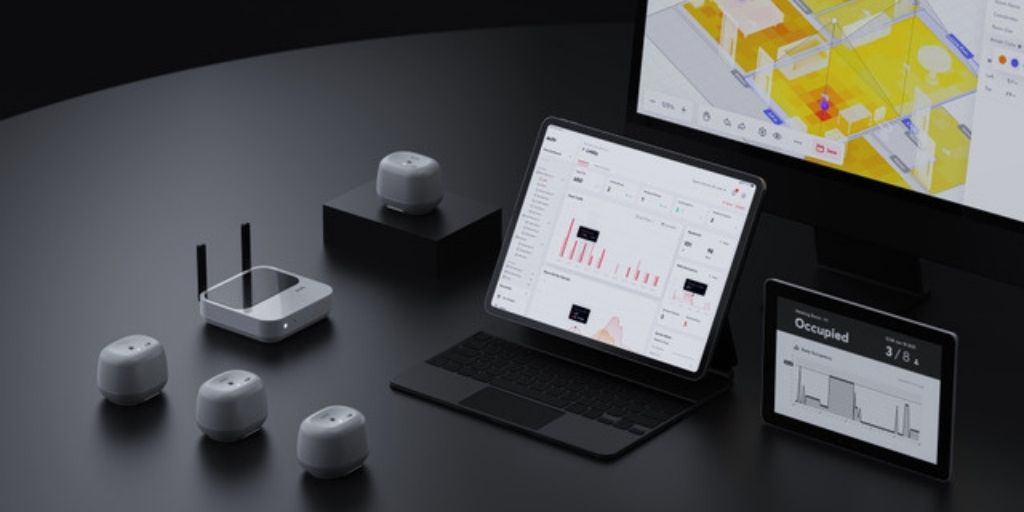
· Hyperplane led the round, with Founder Collective, Union Labs, 500 Startups, SOSV, E14 Fund, Tectonic Ventures, Scott Belsky, Chad Laurans and Sunny Vu participating.
San Francisco based designers and engineers Honghao Deng and Jiani Zeng, together with COO Ioanna Sotiriou and CTO Ziran Zhang have launched Butlr, a technology company that captures and analyses human dynamics.
A spin-off from the MIT Media Lab, Butlr uses a mix of wireless, battery-powered hardware and artificial intelligence to provide real time data on an individual’s movement and motion trajectory, body temperature and behaviour without violating privacy.
Butlr’s Heatic network of passive sensors are able to detect an individual’s biometric heat signature, to track movement and posture, and predict an individual’s behaviour. The system enables seamless automation of architectural elements and allows the built environment to be truly contextual.
Honghao Deng, co-founder of Butlr, said: “Current methods of controlling our built environment are static and binary. However, in nature, our environment is rich and dynamic. The Butlr sensors are able to recognise an individual’s heat signature, which is unique, and modify room temperatures and lighting for optimal comfort based on a particular users’ preferences. Unlike cameras that track and record faces, the Butlr system relies on body heat and cannot be used to trace your identity.”
The innovative technology has extensive applications, enabling physical spaces to work more effectively and efficiently. The sensors can modify environments including lighting and temperature, detect a break-in or accidents in the home, assist businesses in understanding customer behaviour, and determine occupancy and activity intensity.
Butlr is currently expanding into physical retail, with the technology due to be introduced into 200,000 retail stores globally. The sensor array is able to capture user behaviour, record foot traffic, and curate heat maps and zone counting in any retail space. The system will enable bricks and mortar businesses to optimise their operations by translating location and duration data into shopping preference through analysis in real time.
As a result of the coronavirus pandemic, the team have also developed a number of features including maximum occupancy control, automated queues, social distance management. They launched temperature screening, enabling businesses to respond to government guidelines while maintaining the safety of customers and staff. These features also apply to schools, offices, and hospitals to help improve public health and safety.
The business is currently exploring the use of its technology in assisted living where its application will revolutionise care facilities through automation. The sensors, which reconstruct user behaviour without video or sound surveillance, will be able to determine a residents’ moving speed and calories burnt based on their indoor location and body temperature. Partnering with assisted living technology integrators IDP Santé, the data will be able to determine residents’ wellbeing and ability to live independently without metrics being manually measured on an ongoing basis.
Equipped with an extensive IoT system, Butlr is driving data-driven disruption of our built environments, enabling physical spaces to be dynamic and responsive, and entirely customisable.
Jiani Zeng, co-founder of Butlr, said: “In the age of coronavirus, our buildings and human environments are going to need to be asked to do more in order to respond to new health and safety requirements that prevent future disease outbreaks.
“For the past 2000 years, everything from the way people commute, to the way they communicate has evolved. However, architecture hasn’t changed much, with the same pillar and slabs still serving as the primary foundation today. We believe that the future of architecture is responsive and context-aware.”












